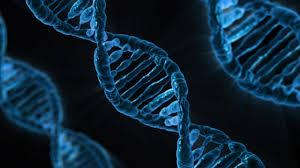Ib Biology Course Companion Guide
At one end of the scale is the cell, its molecular construction and complex metabolic reactions. At the other end of the scale biologists investigate the interactions that make whole ecosystems function. Many discoveries remain to be made and great progress is expected in the 21st century. Through studying a science subject students should become aware of how scientists work and communicate with each other. While the scientific method may take on a wide variety of forms, the emphasis on a practical approach.

In addition, through the overarching theme of the “Nature of Science” this knowledge and skills will be put into the context of way science and scientists work in the 21 st Century and the ethical debates and limitations of creative scientific endeavour. The sciences are taught practically. Students have opportunities to design investigations, collect data, develop manipulative skills, analyse results, collaborate with peers and evaluate and communicate their findings. The investigations may be laboratory based or they may make use of simulations and data bases.
Students develop the skills to work independently on their own design, but also collegiately, including collaboration with schools in different regions, to mirror the way in which scientific research is conducted in the wider community. Biology syllabus outline: Higher level (240 hours). Internal assessment (individual investigation): 20%.
Ib Biology Course Book has 61 ratings and 8 reviews. Reetta said: Since the IB books have been most of what I've recently read, I thought I may as well g.
External assessment: 80% Standard level (150 hours). Internal assessment (individual investigation): 20%.
External assessment: 80% Key features of the curriculum and assessment models. Available at standard (SL) and higher levels (HL). The minimum prescribed number of hours is 150 for SL and 240 for HL.
Ib Biology Course Companion
Students are assessed both externally and internally. Biology students at SL and HL undertake a common core syllabus and a common internal assessment (IA) scheme.
Ib Biology Course Companion Guidelines
While there are core skills and activities common to both SL and HL students, students at HL are required to study the options and some topics in greater depth as well as some additional topics. The distinction between SL and HL is one of breadth and depth. A practical approach to the course delivery is emphasised through the interdisciplinary group 4 project and a mixture of both short-term and long-term experiments and investigations. Internal assessment accounts for 20% of the final assessment and this is assessed through a single individual investigation. This investigation may involve a hands-on approach, use of data-bases, modelling, simulation or a hybrid.
Student work is internally assessed by the teacher and externally moderated by the IB. The external assessment of biology consists of three written papers. In paper 1 there are 30 (at SL) or 40 (at HL) multiple-choice questions. Paper 2 contains short-answer and extended-response questions on the core (and Additional Higher Level (AHL) material at HL). Paper 3 has two sections; Section A contains one data-based question and several short-answer questions on experimental work on the core (and AHL material at HL). Section B contains short-answer and extended-response questions from each of the four options Learn more about biology in.
Pat Hanson, IB Coordinator, Academy of the Holy Cross, USA The Oxford IB course books are the best ever resource for both teachers and students. They are practical, insightful and fully in line with the IB Course outcomes. Carolyn Hawkins, IB Coordinator, Cookeville High School, USA All of the Oxford IB course books are terrific. Sheta Saha, IB Coordinator, Chatsworth International School, Singapore We have adopted most of the Oxford course books for our school.
We find them well written, well linked to TOK issues and age appropriate. Membranes; 3. Cell division; 4. Chemicals of life; 5.

DNA structure and replication; 6. Transcription and translation; 7. Cell respiration; 9. Photosynthesis; 10. Plant science; 11. Genetics - the study of inheritance; 13.

Advanced genetics; 14. Biotechnology and genetic engineering; 15. The carbon cycle and the greenhouse effect; 17.
Evolution; 18. Classification; 19. Digestion; 20. The transport system; 21.
Defence against infectious diseases; 22. Gas exchange; 23. The kidney; 24. Nerves and hormones; 25. Muscles and movement; 26. Reproduction; 27. Option A: Human nutrition and health; 28.
Option B: Physiology of exercise; 29. Option D: Evolution; 30. Option E: Neurobiology and behaviour; 31.
Option F: Microbes and biotechnology; 32. Option G: Ecology and Conservation; 33. Option H: Further Human Physiology; 34. Researching biology - extended essays; 35. Internal Assessment; 36.
Preparing for your exam; Answers to questions; Index.